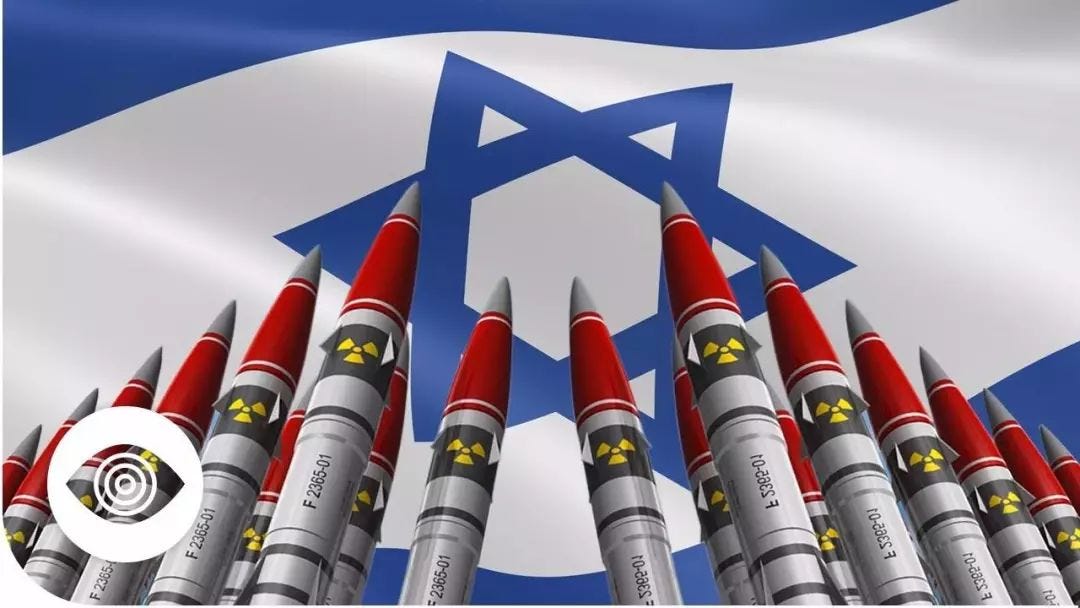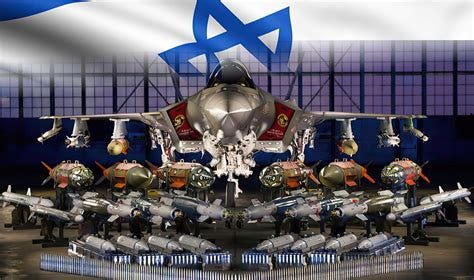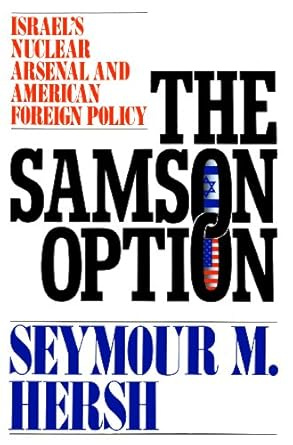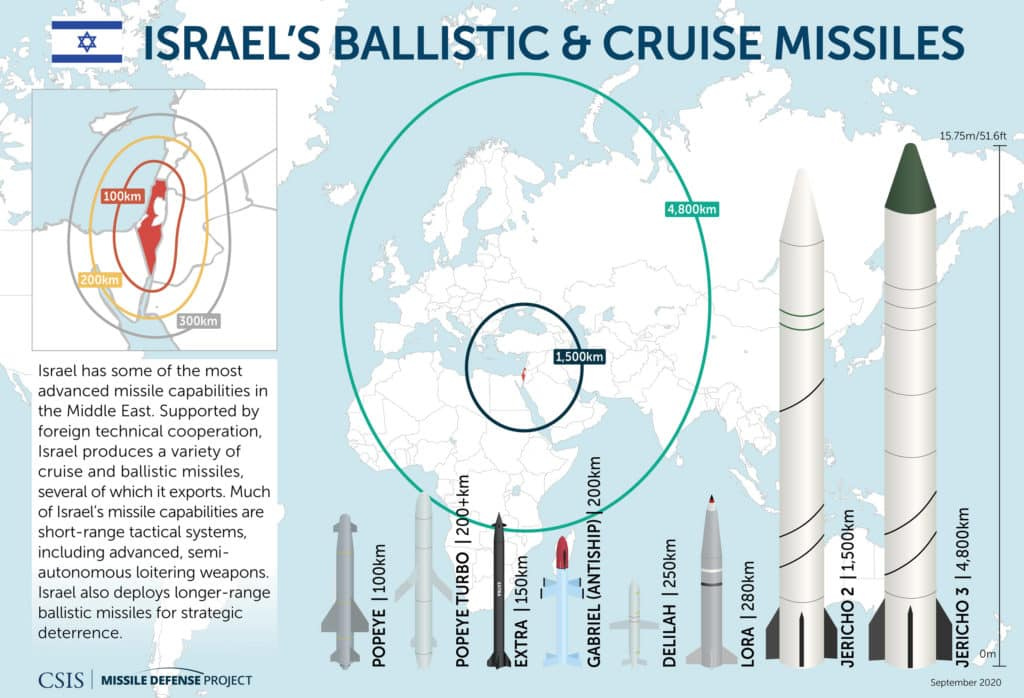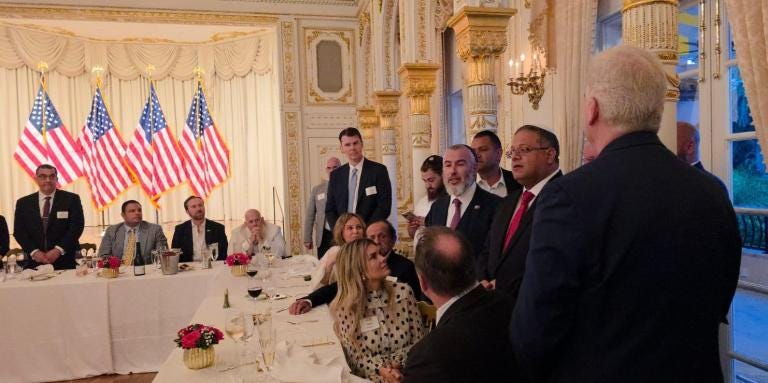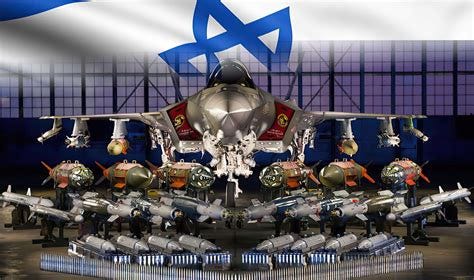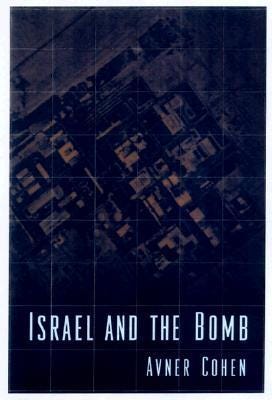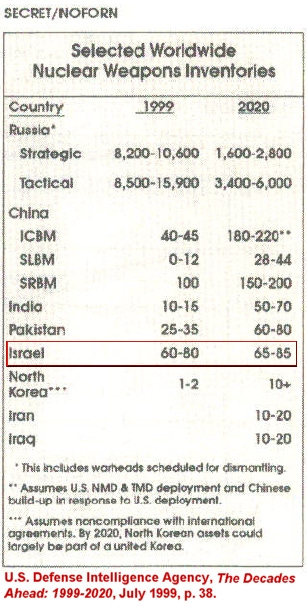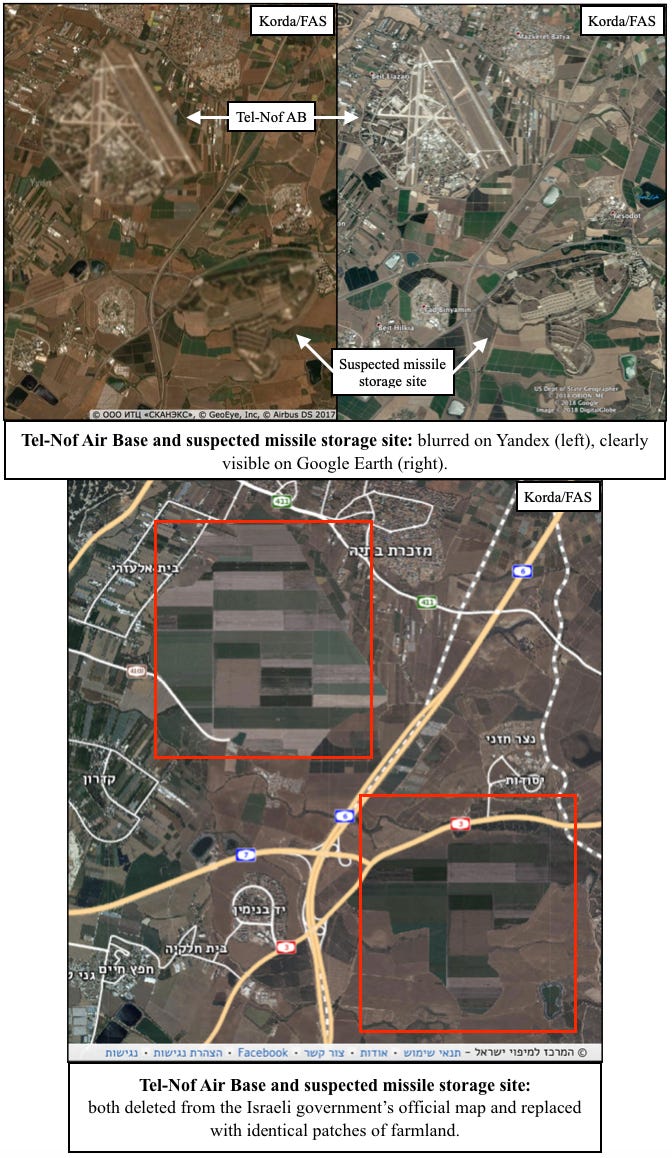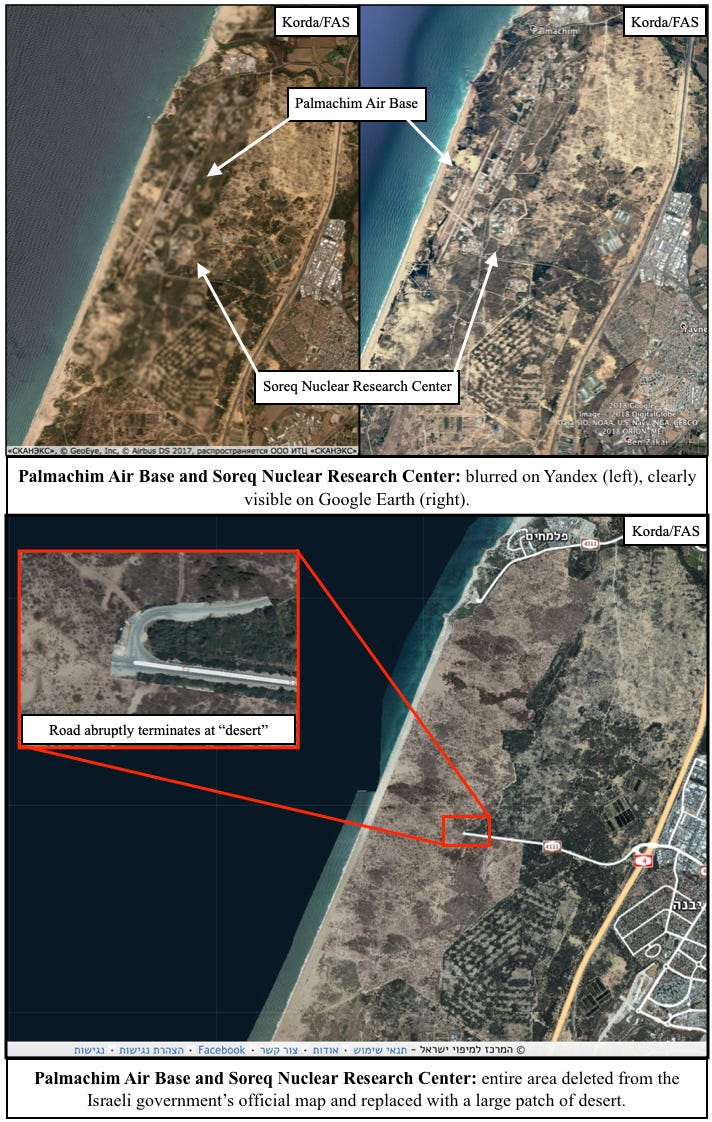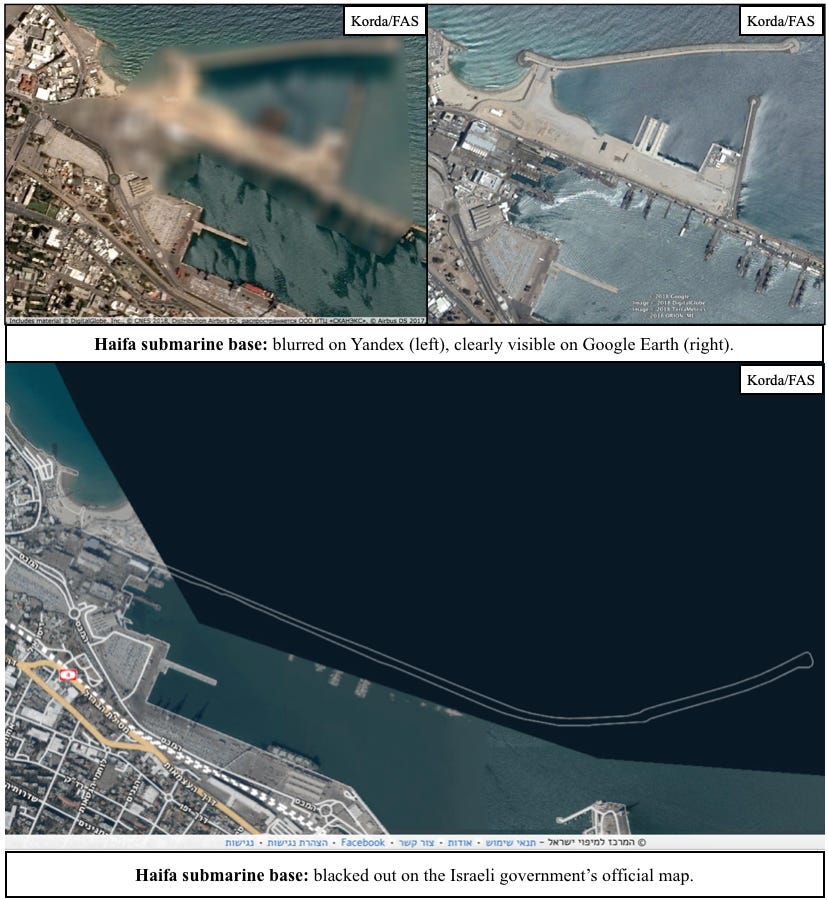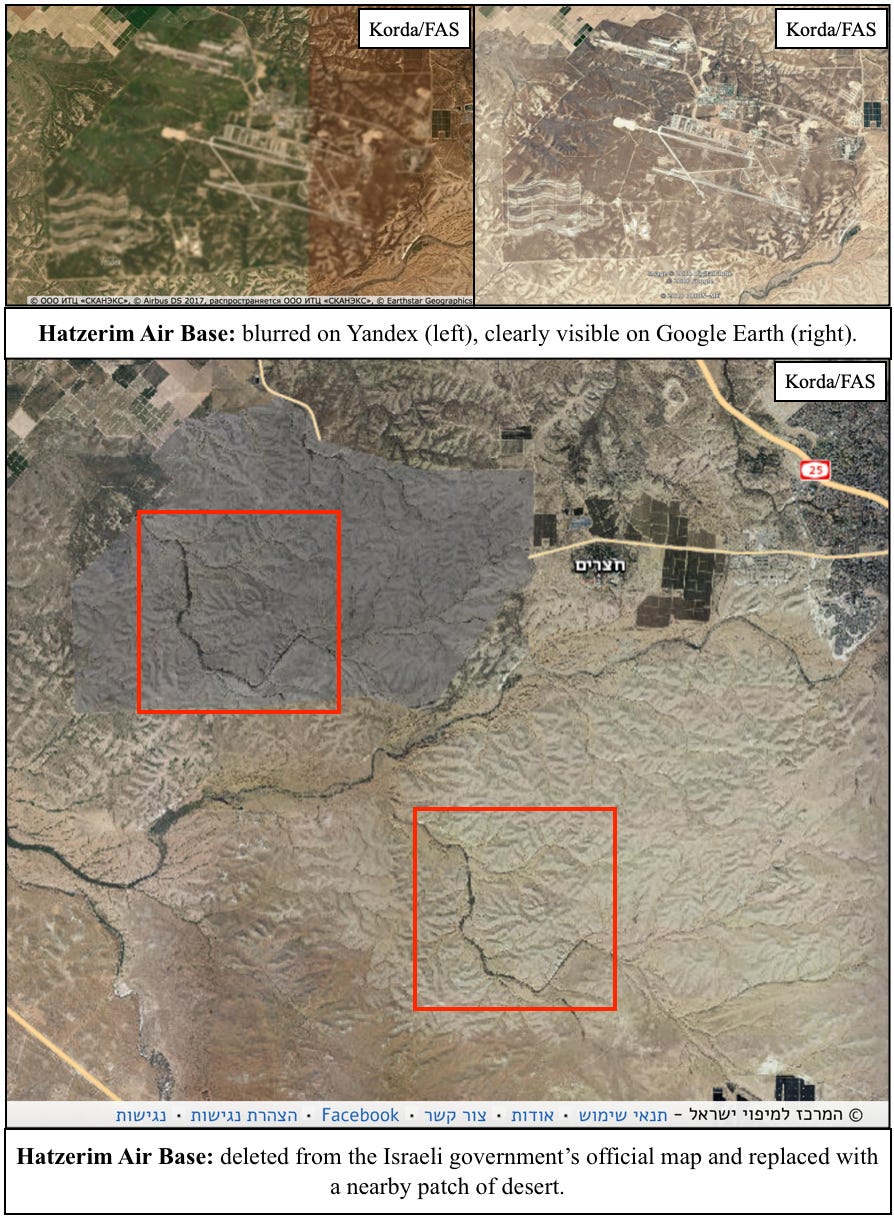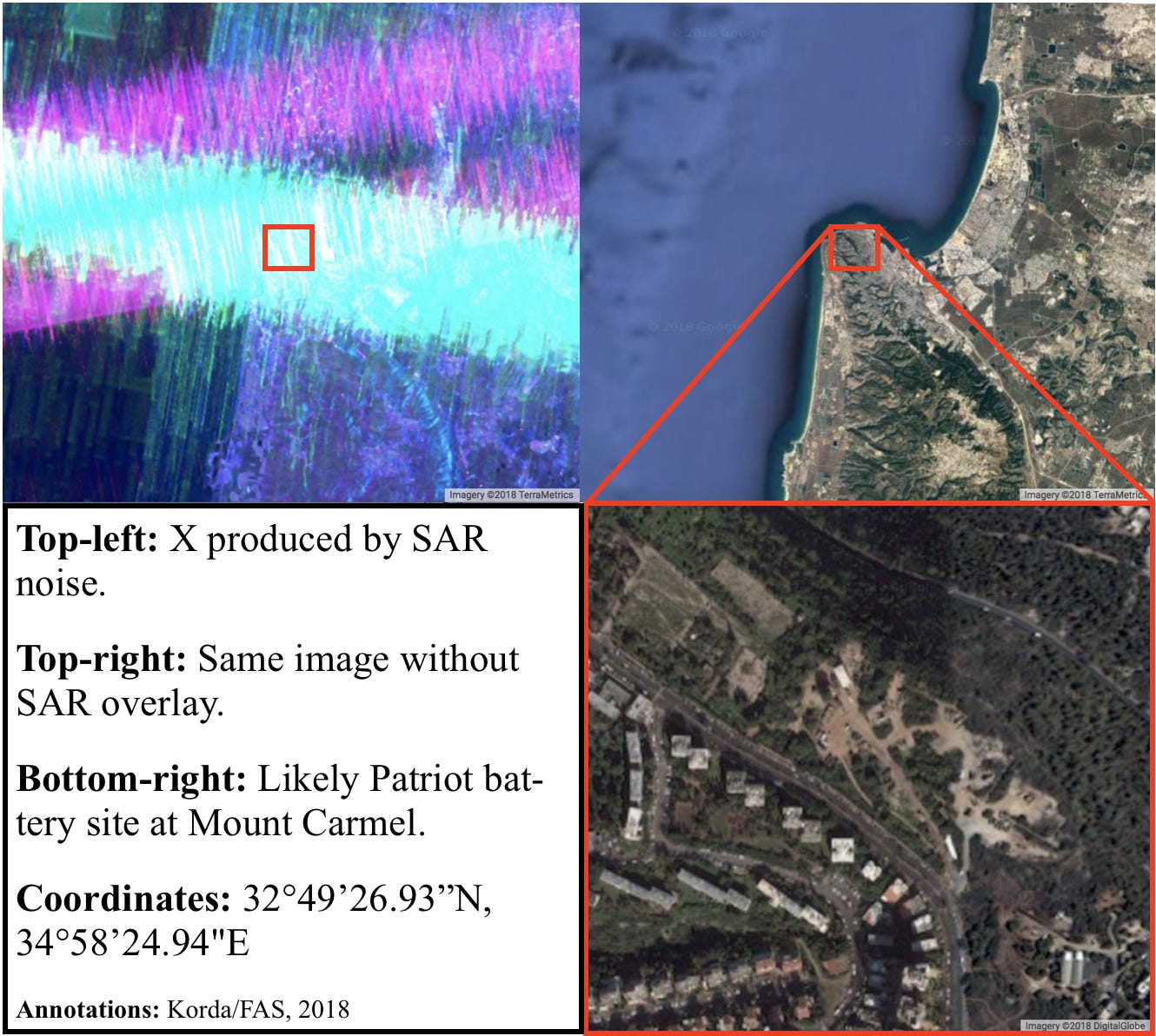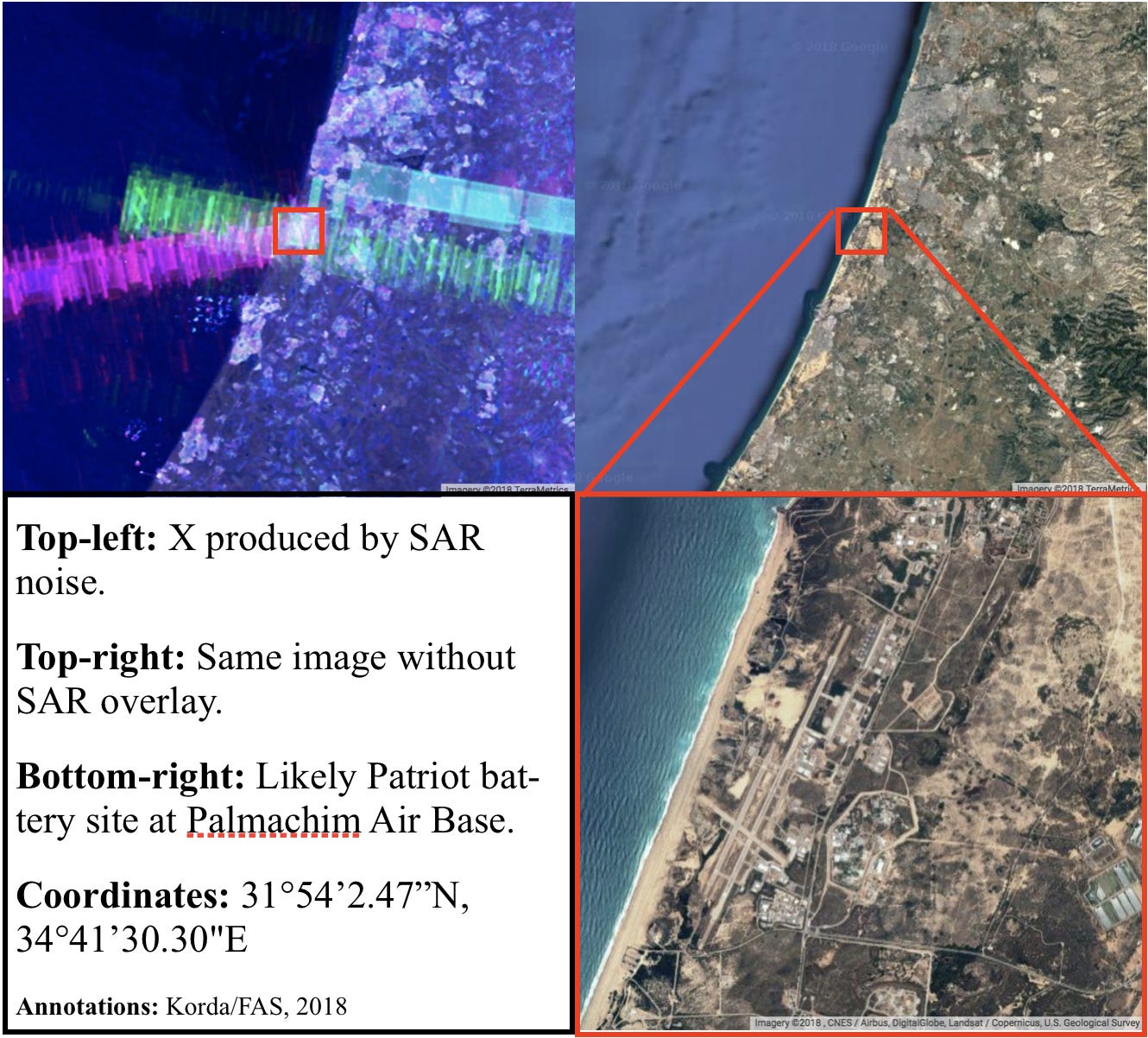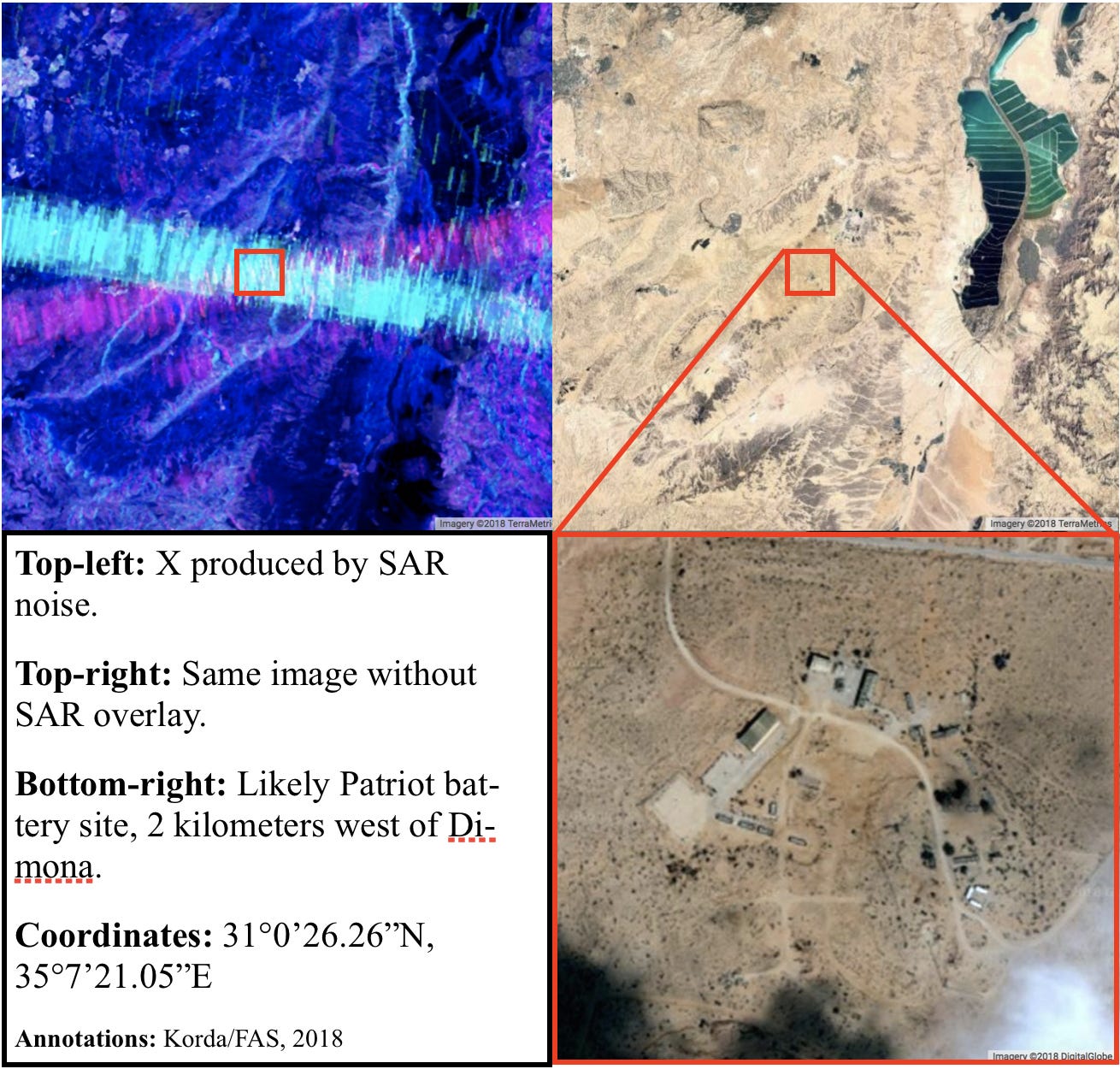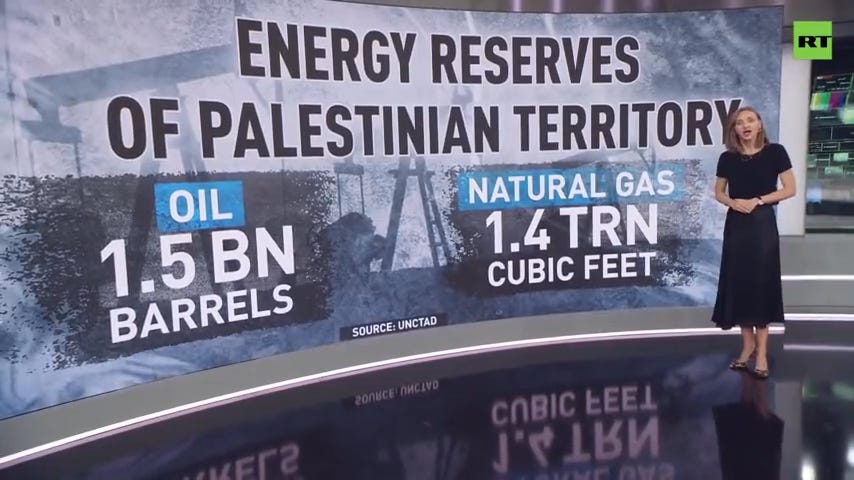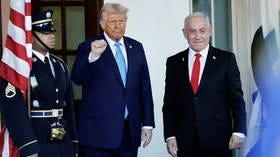Iran has Good Reason to Pursue its own nuclear weapons as Deterrence against Israeli Nuclear Weapons Arsenal
The monumental hypocrisy of MAGA Zionist Trump’s ranting about Iran’s civilian nuclear development as a “threat”
The monumental hypocrisy of MAGA Zionist Trump’s ranting about Iran’s civilian nuclear development as a “threat”
Iran has Good Reason to Pursue its own nuclear weapons as Deterrence against Israeli Nuclear Weapons Arsenal
US-Zionist Israel Nuking Gaza as Final Solution?
Since the establishment of the Zionist Israel white racist colonial settler regime, Israeli elites have built their own nuclear weapons arsenal with significant help from the US and collective western regimes.
The monumental hypocrisy of MAGA Zionist Trump’s ranting about Iran’s civilian nuclear development as a “threat” to the world community is meant as a distraction from Israel’s own genocidal policies over Palestine and as “a US land-based aircraft carrier” used to project both US and Israeli military power throughout the regime.
MAGA Zionist Trump Lies: Replay of US Iraq War WMD Lies - Israeli Nukes Kept Secret. Why?
Iran suspends cooperation with UN nuclear watchdog
Israeli Nuclear Weapons Arsenal
An investigation into Israel's nuclear capabilities discloses information about the country's rush toward nuclear status, its collaboration with South Africa and Iran, and its espionage activities. Reprint. NYT
Nuclear Weapons Ban Monitor Nuclear Weapons Ban Monitor
1.15MB ∙ PDF file
The Us Discovery Of Israel S Secret Nuclear Project Wilson Center
18.8MB ∙ PDF fileDownload
Zionism’s Final Solution for “the Palestine Problem”
Ben Gvir to promote Gaza starvation plan at private Brooklyn ‘welcoming’ brunch
US Zionist indulge in rich donor private lunch while Palestine starves do death.
Forever-Occupation, Genocide, and Profit: Special Rapporteur’s Report Exposes Corporate Forces behind Destruction of Palestine
Forever-Occupation, Genocide, and Profit: Special Rapporteur’s Report Exposes Corporate Forces behind Destruction of Palestine
Until now, there has been no detailed account of Israel's nuclear history. Previous treatments of the subject relied heavily on rumors, leaks, and journalistic speculations. But with Israel and the Bomb, Avner Cohen has forged an interpretive political history that draws on thousands of American and Israeli government documents―most of them recently declassified and never before cited―and more than one hundred interviews with key individuals who played important roles in this story. Cohen reveals that Israel crossed the nuclear weapons threshold on the eve of the 1967 Six-Day War, yet it remains ambiguous about its nuclear capability to this day. What made this posture of "opacity" possible, and how did it evolve?
Cohen focuses on a two-decade period from about 1950 until 1970, during which David Ben-Gurion's vision of making Israel a nuclear-weapon state was realized. He weaves together the story of the formative years of Israel's nuclear program, from the founding of the Israeli Atomic Energy Commission in 1952, to the alliance with France that gave Israel the sophisticated technology it needed, to the failure of American intelligence to identify the Dimona Project for what it was, to the negotiations between President Nixon and Prime Minister Meir that led to the current policy of secrecy. Cohen also analyzes the complex reasons Israel concealed its nuclear program―from concerns over Arab reaction and the negative effect of the debate at home to consideration of America's commitment to nonproliferation.
Israel and the Bomb highlights the key questions and the many potent issues surrounding Israel's nuclear history. This book will be a critical resource for students of nuclear proliferation, Middle East politics, Israeli history, and American-Israeli relations, as well as a revelation for general readers.
‘Perverted logic’ to call Israeli attack on Iran self-defense – Russian diplomat
14 Jun, 2025 09:44 Russia Today
FILE PHOTO. Aerial view south of SIS M16 building at Vauxhall Cross, London. © Getty Images / Andrew Holt
2 Jul, 2025 13:29 Russia Today
MI6 infiltrated global nuclear watchdog – media
A veteran British spy allegedly worked inside the IAEA amid escalating tensions over Iran, according to Grayzone
A British intelligence operative allegedly infiltrated the International Atomic Energy Agency (IAEA) to help coordinate Western sanctions against Iran, The Grayzone wrote on Tuesday.
The outlet cited leaked documents describing MI6 agent Nicholas Langman and his role within the UN watchdog.
Langman’s resume was reportedly found in a trove of leaked papers detailing the activities of Torchlight, a UK intelligence cutout. He was allegedly linked to covering up British intelligence’s role in Princess Diana’s death and has been accused by Greek authorities of managing the abduction and torture of Pakistani immigrants in Athens.
His resume reportedly states that Langman also “led large, inter-agency teams to identify and defeat the spread of nuclear, chemical and biological weapons technology,” including through “support for the [IAEA] and Organization for the Prohibition of Chemical Weapons (OPCW).”
Langman is said to have played a major role in organizing the sanctions imposed on Iran by “[building] highly effective and mutually supportive relations across government and with senior US, European, Middle and Far Eastern colleagues for strategy” between 2010 and 2012. He also claims credit for enabling “the major diplomatic success of [the] Iranian nuclear and sanctions agreement.”
Langman’s tenure at the UK Foreign Office’s Counter-Proliferation Centre coincided with a surge in Western sanctions and covert operations against Iranian scientists. During that period, Israeli assassinations and sabotage intensified, while the US and EU imposed sweeping economic penalties.
Iran has long accused the IAEA of colluding with its adversaries. Officials in Tehran have claimed the agency provided Israel with the identities of nuclear scientists and intelligence about key facilities, which were bombed last month by Israeli and US forces.
On June 12, the IAEA accused Iran of violating the Non-Proliferation Treaty. Despite no evidence being presented that Tehran was pursuing a nuclear weapon, the following day Israel launched strikes targeting Iranian nuclear scientists and uranium enrichment facilities. Iran denied the accusations and retaliated.
The US joined the Israeli operation on June 22. The 12-day war ended last week in a US brokered ceasefire which has so far been upheld.
Tehran has since suspended cooperation with the IAEA, barred Director General Rafael Grossi from entering the country, and voted to end the routine monitoring of its nuclear sites. Iranian Foreign Ministry spokesman Esmaeil Baqaei has accused Grossi of issuing a “biased report” that was used by Israel to justify its “unlawful” attack.
Russia has also condemned the agency’s role. Foreign Ministry spokeswoman Maria Zakharova has said IAEA data was used to plan the strikes, calling it “a colossal blow” to the watchdog’s credibility.
The BBC isn’t telling the truth about Israel’s nuclear arms
The UK broadcaster is writing hundreds of articles on Iran’s budding nuclear programme while failing to inform the public about Israel’s actual nuclear weapons.
MARK CURTIS 2 July 2025
The BBC is failing to properly inform the public about Israel’s possession of nuclear arms, new analysis by Declassified shows.
The British broadcaster widely reported Israel’s attacks on Iran which began on 13 June, and US airstrikes on the country that took place on 22 June.
Both Israel and the US claimed their attacks, which are widely seen as illegal, were to prevent Iran from developing a nuclear weapons capability.
But the irony of two nuclear armed-states attacking a non-nuclear state to prevent it acquiring such weapons appears to have been lost on the BBC.
The British broadcaster appears to barely notice that Israel is a nuclear-armed state.
We analysed the BBC’s online reporting (excluding videos) for 13-26 June, looking at all articles tagged with either Iran or Israel, and found 103 articles and a further 821 short pieces in the BBC’s live written reporting.
The possibility that Israel might possess nuclear arms is mentioned in just six of those 103 articles. In five of those six, there is a single sentence that often occurs as the last line of the article: “Israel is widely believed to have nuclear weapons, although it neither confirms nor denies this”.
Only one article, dated 18 June, contains a slightly longer consideration of Israeli nukes in its ninth and last section. This is a 96-word response to the question: “Does Israel have nuclear weapons?”, which is part of a “Your questions answered” piece that suggests BBC viewers might be interested in the issue.
Its first sentence is: “There are estimates that it has about 90 nuclear warheads. But the real answer is we do not know”.
It then repeats Israel’s position that it “neither confirmed nor denied a nuclear capability” and its final sentence says again that “there is no overt declaration by Israel” as to its possession of nuclear weapons.
Israeli weapons
While many of the BBC’s hundreds of articles about Iran quote Israeli officials on Tehran’s nuclear programme, the broadcaster is failing to consult independent sources of information about Israel’s nuclear arms.
Swedish research institute SIPRI estimates that Israel has at least 90 nuclear warheads but that the number could reach as high as 300. Israel’s army, air force and navy are all assessed to be nuclear-armed.
Various sources suggest that Israel’s submarines have been refitted to carry missiles armed with nuclear weapons. As long ago as 2012, German magazine Der Spiegel reported that “experts in Germany and Israel have confirmed that nuclear-tipped missiles have been deployed on the vessels”.
Furthermore, SIPRI’s latest assessment is that Israel is “believed to be modernizing its nuclear arsenal and appears to be upgrading its plutonium production reactor site at Dimona” in the Negev desert.
This is surely a consequential issue in light of the alleged reasons given by the US and Israel to bomb Iran. While failing to report Israel’s nuclear “modernisation” programme, BBC articles have regularly quoted Israeli officials alleging that Iran is taking steps to “weaponise” its “enriched uranium stockpile”.
Non-proliferation
Our analysis of the BBC’s shorter articles, which are contained in its live reporting, found only three mentions of Israeli nuclear arms in 821 pieces.
One of these short pieces repeats the wording in the BBC article of 18 June mentioned above.
The two others contain more information. One states “what is already widely believed to be an open secret – that Israel has nuclear weapons of its own, stretching back to the 1960s”, adding that “most estimates put Israel’s arsenal at about 90 nuclear warheads”.
It also correctly states what hundreds of other BBC articles do not cover, that Israel “is also not a signatory of the Non-Proliferation Treaty (NPT), an international agreement designed to stop the spread of nuclear weapons”.
The third short piece repeats that Israel is “widely believed” to have nuclear arms and “has not signed [the NPT] because it pursues a policy of nuclear ambiguity as a tactic against foes and does not allow inspections of its nuclear facilities, which would be required under the NPT.”
It then adds important context missed from its other reporting: “Iran, Arab countries and others have long demanded that Israel be pressured into disarming and being transparent about its nuclear programme, viewing Israel’s supposed arsenal as a source of regional tension and a threat.”
‘Military balance’
The paucity of BBC coverage of Israeli nuclear arms contrasts with the glossy maps, analysis and extensive commentary on Iran’s nuclear programme, including headlines such as “What is a centrifuge production site?” and “The range of Iran’s ballistic missiles”.
Unreported by the BBC is that Israel’s cruise missiles are believed to have a range of around 1,500 miles and can reach Iran with a warhead weighing up to 200 kilogrammes.
An “in depth” BBC analysis on 26 June noted that “Iran’s ballistic missile silos” seemed to have “escaped the destruction” launched by Israel in the recent attacks, and that “Israel will be concerned about the remaining possible 1,500 [missiles] still in the hands of the Iranian side”.
But the “in depth” article didn’t mention Israel’s nuclear or other missile capabilities or any Iranian “concerns” about them.
Top BBC journalists such as security correspondent Frank Gardner, defence correspondent Jonathan Beale and Middle East bureau chief Jo Floto, have all written articles about the conflict over Iran’s nuclear programme without mentioning Israeli nuclear weapons.
Beale’s article had a sub-heading entitled: “The BBC looks at the military balance in the latest war in the Middle East”. Even then, no mention was made of Israel’s nuclear arms in this so-called “military balance”.
One of Gardner’s articles about Israel’s attacks on Iran has the sub-heading “Talk of a nuclear arms race”, which mentioned half a dozen countries in the Middle East and globally, but conspicuously failed to mention Israel.
Tom Mills, a lecturer at Aston University and author of a book on the BBC, said: “The BBC fails to report impartially on many important areas of public policy, but foreign policy has always been the most striking.
“It’s not just that basic journalistic principles don’t seem to apply when it comes to the actions of the British state and its allies. There’s a consistent failure to put events in their proper context. So even when some independent or critical perspectives appear, the public are still left completely misinformed.”
The BBC told Declassified: “The point of contention during this conflict has been Iran’s nuclear capability, which we have examined in significant detail. Throughout our reporting we have referred to Israel’s long-discussed nuclear capabilities to give audiences context and understanding of the broader situation.”
US-backed Zionist Israeli Nuclear Weapons Program Arsenal:
Zionist Israel’s Nuclear Weapons
Israel has not confirmed that it has nuclear weapons and officially maintains that it will not be the first country to introduce nuclear weapons into the Middle East. Yet the existence of Israeli nuclear weapons is a "public secret" by now due to the declassification of large numbers of formerly highly classified US government documents which show that the United States by 1975 was convinced that Israel had nuclear weapons.
History
Israel began actively investigating the nuclear option from its earliest days. In 1949, HEMED GIMMEL a special unit of the IDF's Science Corps, began a two-year geological survey of the Negev desert with an eye toward the discovery of uranium reserves. Although no significant sources of uranium were found, recoverable amounts were located in phosphate deposits.
The program took another step forward with the creation of the Israel Atomic Energy Commission (IAEC) in 1952. Its chairman, Ernst David Bergmann, had long advocated an Israeli bomb as the best way to ensure "that we shall never again be led as lambs to the slaughter." Bergmann was also head of the Ministry of Defense's Research and Infrastructure Division (known by its Hebrew acronym, EMET), which had taken over the HEMED research centers (HEMED GIMMEL among them, now renamed Machon 4) as part of a reorganization. Under Bergmann, the line between the IAEC and EMET blurred to the point that Machon 4 functioned essentially as the chief laboratory for the IAEC. By 1953, Machon 4 had not only perfected a process for extracting the uranium found in the Negev, but had also developed a new method of producing heavy water, providing Israel with an indigenous capability to produce some of the most important nuclear materials.
For reactor design and construction, Israel sought the assistance of France. Nuclear cooperation between the two nations dates back as far as early 1950's, when construction began on France's 40MWt heavy water reactor and a chemical reprocessing plant at Marcoule. France was a natural partner for Israel and both governments saw an independent nuclear option as a means by which they could maintain a degree of autonomy in the bipolar environment of the cold war.
In the fall of 1956, France agreed to provide Israel with an 18 MWt research reactor. However, the onset of the Suez Crisis a few weeks later changed the situation dramatically. Following Egypt's closure of the Suez Canal in July, France and Britain had agreed with Israel that the latter should provoke a war with Egypt to provide the European nations with the pretext to send in their troops as peacekeepers to occupy and reopen the canal zone. In the wake of the Suez Crisis, the Soviet Union made a thinly veiled threat against the three nations. This episode not only enhanced the Israeli view that an independent nuclear capability was needed to prevent reliance on potentially unreliable allies, but also led to a sense of debt among French leaders that they had failed to fulfill commitments made to a partner. French premier Guy Mollet is even quoted as saying privately that France "owed" the bomb to Israel.
On 3 October 1957, France and Israel signed a revised agreement calling for France to build a 24 MWt reactor (although the cooling systems and waste facilities were designed to handle three times that power) and, in protocols that were not committed to paper, a chemical reprocessing plant. This complex was constructed in secret, and outside the IAEA inspection regime, by French and Israeli technicians at Dimona, in the Negev desert under the leadership of Col. Manes Pratt of the IDF Ordinance Corps.
Both the scale of the project and the secrecy involved made the construction of Dimona a massive undertaking. A new intelligence agency, the Office of Science Liasons,(LEKEM) was created to provide security and intelligence for the project. At the height construction, some 1,500 Israelis some French workers were employed building Dimona. To maintain secrecy, French customs officials were told that the largest of the reactor components, such as the reactor tank, were part of a desalinization plant bound for Latin America. In addition, after buying heavy water from Norway on the condition that it not be transferred to a third country, the French Air Force secretly flew as much as four tons of the substance to Israel.
Trouble arose in May 1960, when France began to pressure Israel to make the project public and to submit to international inspections of the site, threatening to withhold the reactor fuel unless they did. President de Gaulle was concerned that the inevitable scandal following any revelations about French assistance with the project, especially the chemical reprocessing plant, would have negative repercussions for France's international position, already on shaky ground because of its war in Algeria.
At a subsequent meeting with Ben-Gurion, de Gaulle offered to sell Israel fighter aircraft in exchange for stopping work on the reprocessing plant, and came away from the meeting convinced that the matter was closed. It was not. Over the next few months, Israel worked out a compromise. France would supply the uranium and components already placed on order and would not insist on international inspections. In return, Israel would assure France that they had no intention of making atomic weapons, would not reprocess any plutonium, and would reveal the existence of the reactor, which would be completed without French assistance. In reality, not much changed - French contractors finished work on the reactor and reprocessing plant, uranium fuel was delivered and the reactor went critical in 1964.
DIA Estimate For Israeli Nuclear Weapons
Excerpt from 160-page secret DIA report, first disclosed and reproduced in Rowan Scarborough, Rumsfeld's War (Regnery, 2004), pp. 194-223.
The United States first became aware of Dimona's existence after U-2 overflights in 1958 captured the facility's construction, but it was not identified as a nuclear site until two years later. The complex was variously explained as a textile plant, an agricultural station, and a metallurgical research facility, until David Ben-Gurion stated in December 1960 that Dimona complex was a nuclear research center built for "peaceful purposes."
There followed two decades in which the United States, through a combination of benign neglect, erroneous analysis, and successful Israeli deception, failed to discern first the details of Israel's nuclear program. As early as 8 December 1960, the CIA issued a report outlining Dimona's implications for nuclear proliferation, and the CIA station in Tel Aviv had determined by the mid-1960s that the Israeli nuclear weapons program was an established and irreversible fact.
United States inspectors visited Dimona seven times during the 1960s, but they were unable to obtain an accurate picture of the activities carried out there, largely due to tight Israeli control over the timing and agenda of the visits. The Israelis went so far as to install false control room panels and to brick over elevators and hallways that accessed certain areas of the facility. The inspectors were able to report that there was no clear scientific research or civilian nuclear power program justifying such a large reactor - circumstantial evidence of the Israeli bomb program - but found no evidence of "weapons related activities" such as the existence of a plutonium reprocessing plant.
Although the United States government did not encourage or approve of the Israeli nuclear program, it also did nothing to stop it. Walworth Barbour, US ambassador to Israel from 1961-73, the bomb program's crucial years, primarily saw his job as being to insulate the President from facts which might compel him to act on the nuclear issue, alledgedly saying at one point that "The President did not send me there to give him problems. He does not want to be told any bad news." After the 1967 war, Barbour even put a stop to military attach�s' intelligence collection efforts around Dimona. Even when Barbour did authorize forwarding information, as he did in 1966 when embassy staff learned that Israel was beginning to put nuclear warheads in missiles, the message seemed to disappear into the bureaucracy and was never acted upon.
Nuclear Weapons Production
In early 1968, the CIA issued a report concluding that Israel had successfully started production of nuclear weapons. This estimate, however, was based on an informal conversation between Carl Duckett, head of the CIA's Office of Science and Technology, and Edward Teller, father of the hydrogen bomb. Teller said that, based on conversations with friends in the Israeli scientific and defense establishment, he had concluded that Israel was capable of building the bomb, and that the CIA should not wait for an Israeli test to make a final assessment because that test would never be carried out.
CIA estimates of the Israeli arsenal's size did not improve with time. In 1974, Duckett estimated that Israel had between ten and twenty nuclear weapons. The upper bound was derived from CIA speculation regarding the number of possible Israeli targets, and not from any specific intelligence. Because this target list was presumed to be relatively static, this remained the official American estimate until the early 1980s.
The actual size and composition of Israel's nuclear stockpile is uncertain and the subject of many - often conflicting - estimates and reports. It is widely reported that Israel had two bombs in 1967, and that Prime Minister Eshkol ordered them armed in Israel's first nuclear alert during the Six-Day War. It is also reported that, fearing defeat in the October 1973 Yom Kippur War, the Israelis assembled 13 twenty-kiloton atomic bombs.
Israel could potentially have produced a few dozen nuclear warheads in the period 1970-1980, and is thought to have produced sufficient fissile material to build 100 to 200 warheads by the mid-1990s. In 1986 descriptions and photographs of Israeli nuclear warheads were published in the London Sunday Times of a purported underground bomb factory at the Dimona nuclear reactor. The photographs were taken by Mordechai Vanunu, a dismissed Israeli nuclear technician. His information led some experts to conclude that Israel had a stockpile of 100 to 200 nuclear devices at that time.
By the late 1990s the U.S. Intelligence Community estimated that Israel possessed between 75-130 weapons, based on production estimates. The stockpile would certainly include warheads for mobile Jericho-1 and Jericho-2 missiles, as well as bombs for Israeli aircraft, and may include other tactical nuclear weapons of various types. Some published estimates even claimed that Israel might have as many as 400 nuclear weapons by the late 1990s. We believe these numbers are exaggerated, and that Israel's nuclear weapons inventory may include less than 100 nuclear weapons. Stockpiled plutonium could be used to build additional weapons if so decided.
Estimates for Israel's nuclear weapons stockpile range from 70 to 400 warheads. The actual number is probably closer to the lower estimate. Additional weapons could probably be built from inventories of fissile materials.
The Dimona nuclear reactor is the source of plutonium for Israeli nuclear weapons. The number of nuclear weapons that could have been produced by Israel has generally been estimated on the basis of assumptions about the power level of this reactor, combined with estimates for the number of delivery vehicles (aircraft, missiles) assigned a nuclear mission.
Information made public in 1986 by Mordechai Vanunu indicated that at that time, weapons grade plutonium was being produced at a rate of about 40 kilograms annually. If this figure corresponded with the steady-state capacity of the entire Dimona facility, analysts suggested that the reactor might have a power level of at least 150 megawatts, about twice the power level at which is was believed to be operating around 1970. To accommodate this higher power level, analysts had suggested that Israel had constructed an enlarged cooling system. An alternative interpretation of the information supplied by Vanunu was that the reactor's power level had remained at about 75 megawatts, and that the production rate of plutonium in the early 1980s reflected a backlog of previously generated material.
The constraints on the size of Israel's stockpile include several potential variables, several of which are generic to any nuclear weapons program. The Dimona reactor may have operated an average of between 200 and 300 days annually, and produced approximately 0.9 to 1.0 grams of plutonium for each thermal megawatt day. Israel may have use between 4 and 5 kilograms of plutonium per weapon [5 kilograms is a conservative estimate, and Vanunu reported that Israeli weapons used 4 kg].
The key variable that is specific to Israel is the power level of the reactor, which is reported to be at least 75 MWt and possibly as high as 200 MWt. New high-resolution satellite imagery provides important insight this matter. The imagery of the Dimona nuclear reactor was acquired by the Public Eye Project of the Federation of American Scientists from Space Imaging Corporation's IKONOS satellite. The cooling towers associated with the Dimona reactor are clearly visible and identifiable in satellite imagery. Comparison of recently acquired commercial IKONOS imagery with declassified American CORONA reconnaissance satellite imagery indicates that no new cooling towers were constructed in the years between 1971 and 2000. This strongly suggests that the reactor's power level has not been increased significantly during this period. This would suggest an annual production rate of plutonium of about 20 kilograms.
Based on plausible upper and lower bounds of the operating practices at the reactor, Israel could have thus produced enough plutonium for at least 100 nuclear weapons, but probably not significantly more than 200 weapons.
Some type of non-nuclear test, perhaps a zero yield or implosion test, occurred on 2 November 1966 [possibly at Al-Naqab in the Negev]. There is no evidence that Israel has ever carried out a nuclear test, although many observers speculated that a suspected nuclear explosion in the southern Indian Ocean in 1979 was a joint South African-Israeli test.
Sources and Resources
Israel Crosses the Threshold, National Security Archive Electronic Briefing Book No. 189, April 28, 2006
Bibliography of Israeli Nuclear Science Publications by Mark Gorwitz, June 2005
Israeli Nuclear Weapons, 2021, Bulletin of the Atomic Scientists, 2022
The Third Temple's Holy Of Holies: Israel's Nuclear Weapons Warner D. Farr, LTC, U.S. Army, September 1999
Israel The Nuclear Potential of Individual Countries Treaty on Nonproliferation of Nuclear Weapons Problems of Extension Appendix 2 Russian Federation Foreign Intelligence Service 6 April 1995
The Samson Option. Israel's Nuclear Arsenal and American Foreign Policy Seymour M Hersh, [New York: Random House, 1991]
Sources and Resources
Special National Intelligence Estimate: Prospects for Further Proliferation of Nuclear Weapons, 23 August 1974
ACRI Petitions for Return of Vanunu's Letters and Documents, Association for Civil Rights in Israel, September 22, 2004
Israel High Court Rules Against Petition of Mordechai Vanunu to Lift Restrictions on Him, 26 July 2004 (Hebrew)
Expert Opinion of Charles Frank Barnaby in the Matter of Mordechai Vanunu, 14 June 2004
Expert Opinion of Professor Sir Joseph Rotblat in the Matter of Mordechai Vanunu, 14 June 2004
Nuclear Weapons Ban Monitor Nuclear Weapons Ban Monitor
1.15MB ∙ PDF file
Israel Archives - Federation of American Scientists
Israel’s Official Map Replaces Military Bases with Fake Farms and Deserts
Somewhat unexpectedly, a blog post that I wrote last week caught fire internationally. On Monday, I reported that Yandex Maps—Russia’s equivalent to Google Maps—had inadvertently revealed over 300 military and political facilities in Turkey and Israel by attempting to blur them out.
In a strange turn of events, the fallout from that story has actually produced a whole new one.
After the story blew up, Yandex pointed out that its efforts to obscure these sites are consistent with its requirement to comply with local regulations. Yandex’s statement also notes that “our mapping product in Israel conforms to the national public map published by the government of Israel as it pertains to the blurring of military assets and locations.”
The “national public map” to which Yandex refers is the official online map of Israel which is maintained by the Israeli Mapping Centre (מרכז למיפוי ישראל) within the Israeli government. Since Yandex claims to take its cue from this map, I wondered whether that meant that the Israeli government was also selectively obscuring sites on its national map.
I wasn’t wrong. In fact, the Israeli government goes well beyond just blurring things out. They’re actually deleting entire facilities from the map—and quite messily, at that. Usually, these sites are replaced with patches of fake farmland or desert, but sometimes they’re simply painted over with white or black splotches.
Some of the more obvious examples of Israeli censorship include nuclear facilities:
Tel-Nof Air Base is just down the road from a suspected missile storage site, both of which have been painted over with identical patches of farmland.
Palmachim Air Base doubles as a test launch site for Jericho missiles and is collocated with the Soreq Nuclear Research Center, which is rumoured to be responsible for nuclear weapons research and design. The entire area has been replaced with a fake desert.
The Haifa Naval Base includes pens for submarines that are rumoured to be nuclear-capable, and is entirely blacked out on the official map.
The Negev Nuclear Research Center at Dimona is responsible for plutonium and tritium production for Israel’s nuclear weapons program, and has been entirely whited out on the official map.
Hatzerim Air Base has no known connection to Israel’s nuclear weapons program; however, the sloppy method that was used to mask its existence (by basically just copy-pasting a highly-distinctive and differently-coloured patch of desert to an area only five kilometres away) was too good to leave out.
Given that all of these locations are easily visible through Google Earth and other mapping platforms, Israel’s official map is a prime example of needless censorship. But Israel isn’t the only one guilty of silly secrecy: South Korea’s Naver Maps regularly paints over sensitive sites with fake mountains or digital trees, and in a particularly egregious case, the Belgian Ministry of Defense is actually suing Google for not complying with its requests to blur out its military facilities.
Before the proliferation of high-resolution satellite imagery, obscuring aerial photos of military facilities was certainly an effective method for states to safeguard their sensitive data. However, now that anyone with an internet connection can freely access these images, it simply makes no sense to persist with these unnecessary censorship practices–especially since these methods can often backfire and draw attention to the exact sites that they’re supposed to be hiding.
Case studies like Yandex and Strava—in which the locations of secret military facilities were revealed through the publication of fitness heat-maps—should prompt governments to recognize that their data is becoming increasingly accessible through open-source methods. Correspondingly, they should take the relevant steps to secure information that is absolutely critical to national security, and be much more publicly transparent with information that is not—hopefully doing away with needless censorship in the process.
Widespread Blurring of Satellite Images Reveals Secret Facilities
Want to know how to make a satellite imagery analyst instantly curious about something?
Blur it out.
Google Earth occasionally does this at the request of governments that want to keep prying eyes away from some of their more sensitive military or political sites. France, for example, has asked Google to obscure all imagery of its prisons after a French gangster successfully conducted a Hollywood-inspired jailbreak involving drones, smoke bombs, and a stolen helicopter(!)—and Google has agreed to comply by the end of 2018. In similar fashion, an old Dutch law requires Dutch companies to blur their satellite images of military and royal facilities—even to the point where a satellite imagery provider once doctored an image of Volkel Air Base after it was purchased by FAS’ very own Hans Kristensen.
Yandex Maps—Russia’s foremost mapping service—has also agreed to selectively blur out specific sites beyond recognition; however, it has done so for just two countries: Israel and Turkey. The areas of these blurred sites range from large complexes—such as airfields or munitions storage bunkers—to small, nondescript buildings within city blocks.
Although blurring out specific sites is certainly unusual, it is not uncommon for satellite imagery companies to downgrade the resolution of certain sets of imagery before releasing them to viewing platforms like Yandex or Google Earth; in fact, if you trawl around the globe using these platforms, you’ll notice that different locations will be rendered in a variety of resolutions. Downtown Toronto, for example, is always visible at an extremely high resolution; looking closely, you can spot my bike parked outside my old apartment. By contrast, imagery of downtown Jerusalem is always significantly blurrier; you can just barely make out cars parked on the side of the road.
As I explained in my previous piece about geolocating Israeli Patriot batteries, a 1997 US law known as the Kyl-Bingaman Amendment (KBA) prohibits US companies from publishing satellite imagery of Israel at a Ground Sampling Distance lower than what is commercially available. This generally means that US-based satellite companies like DigitalGlobe and viewing platforms like Google Earth won’t publish any images of Israel that are better than 2m resolution.
Foreign mapping services like Russia’s Yandex are legally not subject to the KBA, but they tend to stick to the 2m resolution rule regardless, likely for two reasons. Firstly, after 20 years the KBA standard has become somewhat institutionalized within the satellite imagery industry. And secondly, Russian companies (and the Russian state) are surely wary of doing anything to sour Russia’s critical relationship with Israel.
However, Yandex has taken a step well beyond simply downgrading its Israeli imagery, as is typical for most mapping services. Yandex itself—or perhaps its imagery provider ScanEx—has blurred out specific military installations in their entirety. Interestingly, it has done the same to Turkey, a country that benefits from no special standards and is therefore almost always shown in very high resolution.
This blurring is almost certainly the result of requests from both Israel and Turkey; it seems highly unlikely that a Russian company would undertake such a time-consuming task of its own volition. Fortunately (from an OSINT perspective), this has had the unintended effect of revealing the location and exact perimeter of every significant military facility within both countries, if one is
obsessivecurious enough to sift through the entire map looking for blurry patches. Matching the blurred sites to un-blurred (albeit downgraded) imagery available through Google Earth is a method of “tipping and cueing,” in which one dataset is used to inform a more detailed analysis of a second dataset.My complete list of blurred sites in both Israel and Turkey totals over 300 distinct buildings, airfields, ports, bunkers, storage sites, bases, barracks, nuclear facilities, and random buildings—prompting several intriguing points of consideration:
Included in the list of Yandex’s blurred sites are at least two NATO facilities: Allied Land Command (LANDCOM) in Izmir, and Incirlik Air Base, which hosts the largest contingent of US B61 nuclear gravity bombs at any single NATO base.
Strangely, no Russian facilities have been blurred—including its nuclear facilities, submarine bases, air bases, launch sites, or numerous foreign military bases in Eastern Europe, Central Asia, or the Middle East.
Although none of Russia’s permanent military installations in Syria have been blurred, almost the entirety of Syria is depicted in extremely low resolution, making it nearly impossible to utilize Yandex for analyses of Syrian imagery. By contrast, both Crimea and the entire Donbass region are visible at very high resolutions, so this blurring standard applies only selectively to Russia’s foreign adventures.
All four Israeli Patriot batteries that I identified using radar interference in my previous post have been blurred out, confirming that these sites do indeed have a military function.
Putting aside the geopolitical intrigue of Russia’s relations with both Israel and Turkey, Yandex’s actions are a prime example of what is known as the Streisand Effect. In 2003, Barbra Streisand attempted to sue a photographer who posted photos of her Malibu mansion online, claiming $10 million in damages and demanding that the innocuous photo be taken down. Her actions completely backfired: not only did Streisand lose the case and have to cover the defendant’s legal fees, but the attention raised by her lawsuit directed significant traffic to the photo in question. Before the lawsuit, the photo had only been viewed six times (including twice by Streisand’s lawyers); a month later, the photo had accumulated over 420,000 views—a prime example of how attempting to obscure something is actually likely to result in unwanted attention.
So too with Yandex. By complying with requests to selectively obscure military facilities, the mapping service has actually revealed their precise locations, perimeters, and potential function to anyone curious enough to find them all.
An X reveals a Diamond: locating Israeli Patriot batteries using radar interference
Amid a busy few weeks of nuclear-related news, an Israeli researcher made a very surprising OSINT discovery that flew somewhat under the radar. As explained in a Medium article, Israeli GIS analyst Harel Dan noticed that when he accidentally adjusted the noise levels of the imagery produced from the SENTINEL-1 satellite constellation, a bunch of colored Xs suddenly appeared all over the globe.
SENTINEL-1’s C-band Synthetic Aperture Radar (SAR) operates at a centre frequency of 5.405 GHz, which conveniently sits within the range of the military frequency used for land, airborne, and naval radar systems (5.250-5.850 GHz)—including the AN/MPQ-53/65 phased array radars that form the backbone of a Patriot battery’s command and control system. Therefore, Harel correctly hypothesized that some of the Xs that appeared in the SENTINEL-1 images could be triggered by interference from Patriot radar systems.
Using this logic, he was able to use the Xs to pinpoint the locations of Patriot batteries in several Middle Eastern countries, including Qatar, Bahrain, Jordan, Kuwait, and Saudi Arabia.
Harel’s blog post also noted that several Xs appeared within Israeli territory; however, the corresponding image was redacted (I’ll leave you to guess why), leaving a gap in his survey of Patriot batteries stationed in the Middle East.
This blog post partially fills that gap, while acknowledging that there are some known Patriot sites—both in Israel and elsewhere around the globe—that interestingly don’t produce an X via the SAR imagery.
All of these sites were already known to Israel-watchers and many have appeared in news articles, making Harel’s redaction somewhat unnecessary—especially since the images reveal nothing about operational status or system capabilities.
Looking at the map of Israel through the SENTINEL-1 SAR images, four Xs are clearly visible: one in the Upper Galilee, one in Haifa, one near Tel Aviv, and one in the Negev. All of these Xs correspond to likely Patriot battery sites, which are known in Israel as “Yahalom” (יהלום, meaning “Diamond”) batteries. Let’s go from north to south.
The northernmost site is home to the 138th Battalion’s Yahalom battery at Birya, which made news in July 2018 for successfully intercepting a Syrian Su-24 jet which had reportedly infiltrated two kilometers into Israeli airspace before being shot down. Earlier that month, the Birya battery also successfully intercepted a Syrian UAV which had flown 10 kilometers into Israeli airspace.
The Yahalom battery in the northwest is based on one of the ridges of Mount Carmel, near Haifa’s Stella Maris Monastery. It is located only 50 meters from a residential neighborhood, which has understandably triggered some resentment from nearby residents who have complained that too much ammunition is stored there and that the air sirens are too loud.
The X in the west indicates the location of a Yahalom site at Palmachim air base, south of Tel Aviv, where Israel conducts its missile and satellite launches. In March 2016, the Israeli Air Force launched interceptors as part of a pre-planned missile defense drill, and while the government refused to divulge the location of the battery, an Israeli TV channel reported that the drill was conducted using Patriot missiles fired from Palmachim air base.
Finally, the X in the southeast sits right on top of the Negev Nuclear Research Centre, more commonly known as Dimona. This is the primary facility relating to Israel’s nuclear weapons program and is responsible for plutonium and tritium production. The site is known to be heavily fortified; during the Six Day War, an Israeli fighter jet that had accidentally flown into Dimona’s airspace was shot down by Israeli air defenses and the pilot was killed.
The proximity of the Negev air defense battery to an Israeli nuclear facility is not unique. In fact, the 2002 SIPRI Yearbook suggests that several of the Yahalom batteries identified through SENTINEL-1 SAR imagery are either co-located with or located close to facilities related to Israel’s nuclear weapons program. The Palmachim site is near the Soreq Centre, which is responsible for nuclear weapons research and design, and the Mount Carmel site is near the Yodefat Rafael facility in Haifa—which is associated with the production of Jericho missiles and the assembly of nuclear weapons—and near the base for Israel’s Dolphin-class submarines, which are rumored to be nuclear-capable.
Google Earth’s images of Israel have been intentionally blurred since 1997, due to a US law known as the Kyl-Bingaman Amendment which prohibits US satellite imagery companies from selling pictures that are “no more detailed or precise than satellite imagery of Israel that is available from commercial sources.” As a result, it is not easy to locate the exact position of the Yahalom batteries; for example, given the number of facilities and the quality of the imagery, the site at Palmachim is particularly challenging to spot.
However, this law is actually being revisited this year and could soon be overturned, which would be a massive boon for Israel-watchers. Until that happens though, Israel will remain blurry and difficult to analyze, making creative OSINT techniques like Harel’s all the more useful.
—–
Sentinel-1 data from 2014 onwards is free to access via Google Earth Engine here, and Harel’s dataset is available here.
Nuclear Transparency and the Stockpile Stewardship and Management Plan
By Hans M. Kristensen
I was reading through the latest Stockpile Stewardship and Management Plan from the National Nuclear Security Administration (NNSA) and wondering what I should pick to critique the Obama administration’s nuclear policy.
After all, there are plenty of issues that deserve to be addressed, including:
– Why NNSA continues to overspend and over-commit and create a spending bow wave in 2021-2026 in excess of the President’s budget in exactly the same time period that excessive Air Force and Navy modernization programs are expected to put the greatest pressure on defense spending?
– Why a smaller and smaller nuclear weapons stockpile with fewer warhead types appears to be getting more and more expensive to maintain?
– Why each warhead life-extension program is getting ever more ambitious and expensive with no apparent end in sight?
– And why a policy of reductions, no new nuclear weapons, no pursuit of new military missions or new capabilities for nuclear weapons, restraint, a pledge to “put an end to Cold War thinking,” and the goal of disarmament, instead became a blueprint for nuclear overreach with record funding, across-the-board modernizations, unprecedented warhead modifications, increasing weapons accuracy and effectiveness, reaffirmation of a Triad and non-strategic nuclear weapons, continuation of counterforce strategy, reaffirmation of the importance and salience of nuclear weapons, and an open-ended commitment to retain nuclear weapons further into the future than they have existed so far?
What About The Other Nuclear-Armed States?
Despite the contradictions and flaws of the administration’s nuclear policy, however, imagine if the other nuclear-armed states also published summaries of their nuclear weapons plans. Some do disclose a little, but they could do much more. For others, however, the thought of disclosing any information about the size and composition of their nuclear arsenal seems so alien that it is almost inconceivable.
Yet that is actually one of the reasons why it is necessary to continue to work for greater (or sufficient) transparency in nuclear forces. Some nuclear-armed states believe their security depends on complete or near-compete nuclear secrecy. And, of course, some nuclear information must be protected from disclosure. But the problem with excessive secrecy is that it tends to fuel uncertainty, rumors, suspicion, exaggerations, mistrust, and worst-case assumptions in other nuclear-armed states – reactions that cause them to shape their own nuclear forces and strategies in ways that undermine security for all.
Nuclear-armed states must find a balance between legitimate secrecy and transparency. This can take a long time and it may not necessarily be the same from country to country. The United States also used to keep much more nuclear information secret and there are many institutions that will always resist public access. But maximum responsible disclosure, it turns out, is not only necessary for a healthy public debate about nuclear policy, it is also necessary to communicate to allies and adversaries what that policy is about – and, equally important, to dispel rumors and misunderstandings about what the policy is not.
Nuclear transparency is not just about pleasing the arms controllers – it is important for national security.
So here are some thoughts about what other nuclear-armed states should (or could) disclose about their nuclear arsenals – not to disclose everything but to improve communication about the role of nuclear weapons and avoid misunderstandings and counterproductive surprises:
Russia should publish:
– Full New START aggregate data numbers (these numbers are already shared with the United States, that publishes its own numbers)
– Size and history of overall nuclear weapons stockpile
– Number of history of nuclear warhead dismantlement (has made statements about percentage reductions since 1991 but not disclosed numbers or history)
– Basic overview of which nuclear forces are nuclear-capable (has made some statements about strategic forces but not shorter-range forces)
– Plans for future years force levels of long-range nuclear forces (has made occasional statements about modernizations but no detailed plan)
– Overall status and out-year budgets for nuclear weapons and nuclear forces
China should publish:
– Size and history of overall nuclear weapons stockpile (stated in 2004 that it possessed the smallest arsenal of the nuclear weapon states but has not disclosed numbers or history)
– Basic overview of its nuclear-capable forces
– Plans for future years force levels of long-range nuclear forces
– Overall status and out-year budgets for nuclear weapons and nuclear forces
France should publish:
– History of overall nuclear weapons stockpile (has disclosed the size of its nuclear stockpile in 2008 and 2015 (300 weapons), but not the history)
– Number and history of nuclear warhead dismantlement (has declared dismantlement of some types but not history)
(France has disclosed its overall force structure and some nuclear budget information is published each year.)
Britain should publish:
– History of overall nuclear weapons stockpile (has declared some approximate historic numbers, declared the approximate size in 2010 (no more than 225), and has declared plan for mid-2020s (no more than 180), but has not disclosed history)
– Number and history of nuclear warhead dismantlement (has announced dismantlement of systems but not numbers or history)
(Britain has published information about the size of its nuclear force structure and part of its nuclear budget.)
Pakistan should publish:
– History of overall nuclear weapons stockpile
– Basic overview of nuclear-capable forces (occasionally declares that a missile test involves nuclear-capable weapon)
– Plans for future years force levels of longer-range nuclear forces
– Overall status and out-year budgets for nuclear weapons and nuclear forces
India should publish:
– History of overall nuclear weapons stockpile
– Basic overview of nuclear-capable forces (occasionally declares that a missile test involves nuclear-capable weapon)
– Plans for future years force levels of longer-range nuclear forces
– Overall status and out-year budgets for nuclear weapons and nuclear forces
Israel should publish:
…or should it? Unlike other nuclear-armed states, Israel has not publicly confirmed it has a nuclear arsenal and has said it will not be the first to introduce nuclear weapons in the Middle East. Some argue Israel should not confirm or declare anything because of fear it would trigger nuclear arms programs in other Middle Eastern countries.
On the other hand, the existence of the Israeli nuclear arsenal is well known to other countries as has been documented by declassified government documents in the United States. Official confirmation would be politically sensitive but not in itself change national security in the region. Moreover, the secrecy fuels speculations, exaggerations, accusations, and worst-case planning. And it is hard to see how the future of nuclear weapons in the Middle East can be addressed and resolved without some degree of official disclosure.
Additional information:
Status of World Nuclear Forces with links to more information about individual nuclear-armed states.
“Nuclear Weapons Base Visits: Accident and Incident Exercises as Confidence-Building Measures,” briefing to Workshop on Non-Strategic Nuclear Weapons in Europe: Transparency and Confidence-Building Measures in Practice, German Institute for International and Security Affairs, Berlin, 27-28 March 2014.
“Nuclear Warhead Stockpiles and Transparency” (with Robert Norris), in Global Fissile Material Report 2013, International Panel on Fissile Materials, October 2013, pp. 50-58.
The research for this publication was made possible by a grant from the New Land Foundation, and Ploughshares Fund. The statements made and views expressed are solely the responsibility of the author.
Letter: Israel Should Allow Vanunu to Emigrate
Mordechai Vanunu, who revealed aspects of Israel’s nuclear weapons program to the press three decades ago and served a lengthy prison term as a result, is again entangled with Israeli legal authorities over the contents of a recent TV interview. See “Nuclear Whistle-blower Vanunu Arrested Over Channel 2 Interview,” Haaretz, September 10.
Vanunu should be allowed to emigrate from Israel, as he has requested, wrote Charles D. Ferguson, president of the Federation of American Scientists, and Frank von Hippel of Princeton University.
“We realize that Vanunu’s past actions are susceptible to different interpretations, including negative interpretations, and that he in fact violated the laws of the State of Israel. But the essential fact is that upon conviction he served his full sentence in prison, as he was required to do. Under the circumstances, we believe it is unjust for Israel to continue to punish him over and over for the same crime,” Ferguson and von Hippel wrote in an October 12 letter to the Government of Israel.
Nuclear Modernization Briefings at the NPT Conference in New York
By Hans M. Kristensen
Last week I was in New York to brief two panels at the Third Session of the Preparatory Committee for the 2015 Review Conference of the Parties to the Treaty on the Non-Proliferation of Nuclear Weapons (phew).
The first panel was on “Current Status of Rebuilding and Modernizing the United States Warheads and Nuclear Weapons Complex,” an NGO side event organized on May 1st by the Alliance for Nuclear Accountability and the Women’s International League for Peace and Freedom (WILPF). While describing the U.S. programs, I got permission from the organizers to cover the modernization programs of all the nuclear-armed states. Quite a mouthful but it puts the U.S. efforts better in context and shows that nuclear weapon modernization is global challenge for the NPT.
The second panel was on “The Future of the B61: Perspectives From the United States and Europe.” This GNO side event was organized by the Nuclear Age Peace Foundation on May 2nd. In my briefing I focused on providing factual information about the status and details of the B61 life-extension program, which more than a simple life-extension will produce the first guided, standoff nuclear bomb in the U.S. inventory, and significantly enhance NATO’s nuclear posture in Europe.
The two NGO side events were two of dozens organized by NGOs, in addition to the more official side events organized by governments and international organizations.
The 2014 PREPCOM is also the event where the United States last week disclosed that the U.S. nuclear weapons stockpile has only shrunk by 309 warheads since 2009, far less than what many people had anticipated given Barack Obama’s speeches about “dramatic” and “bold” reductions and promises to “put an end to Cold War thinking.”
Yet in disclosing the size and history of its nuclear weapons stockpile and how many nuclear warheads have been dismantled each year, the United States has done something that no other nuclear-armed state has ever done, but all of them should do. Without such transparency, modernizations create mistrust, rumors, exaggerations, and worst-case planning that fuel larger-than-necessary defense spending and undermine everyone’s security.
For the 185 non-nuclear weapon states that have signed on to the NPT and renounced nuclear weapons in return of the promise made by the five nuclear-weapons states party to the treaty (China, France, Russia, United Kingdom, and the United States) “to pursue negotiations in good faith on effective measures relating to the cessation of the nuclear arms race at early date and to nuclear disarmament,” endless modernization of the nuclear forces by those same five nuclear weapons-states obviously calls into question their intension to fulfill the promise they made 45 years ago. Some of the nuclear modernizations underway are officially described as intended to operate into the 2080s – further into the future than the NPT and the nuclear era have lasted so far.
Download two briefings listed above: briefing 1 | briefing 2
This publication was made possible by a grant from the Ploughshares Fund. The statements made and views expressed are solely the responsibility of the author.
Nuclear weapons, Israel and Gaza
JUNE 24, 2024 4:00 PM Arvind Dilawar
The Samson Option: Israel’s Plan to Nuke Its Opponents
On September 22, 1979, U.S. surveillance satellite “Vela 6911” detected a double flash of light in the Indian Ocean midway between Africa and Antarctica that appeared to be consistent with the detonation of a nuclear weapon. As researchers with the Federation of American Scientists (FAS) note in their paper, “Israeli Nuclear Weapons, 2021,” U.S. intelligence at the time of “the Vela incident” believed the double flash to be an Israeli nuclear test, conducted with logistical support from the Apartheid-era South African government. A panel assembled by President Jimmy Carter, however, rejected this conclusion based on a premise that the Administration knew to be false, but did not want to challenge politically—that Israel did not possess nuclear weapons.
Israeli “nuclear ambiguity,” its lack of official confirmation or denial that it possesses nuclear weapons, persists to this day. Nevertheless, as of 2021, researchers estimate that the country possesses ninety nuclear warheads, capable of being delivered by aircraft, land-based ballistic missiles, and sea-based cruise missiles. Israel is reserving these weapons for “the Samson Option”: an all-out assault on the civilian population centers of its opponents.
Researchers have been able to reconstruct the history and current status of Israel’s nuclear program through declassified materials, as well as statements by Israeli politicians and officers themselves.
“Israeli officials do not explicitly discuss the country’s nuclear doctrine, but the country still needs to implicitly signal the circumstances under which it would use nuclear weapons for deterrence purposes,” says Kelsey Davenport, director of nonproliferation policy at the Arms Control Association, which advocates for nuclear disarmament. “Reading between the lines of statements from former and current officials and military planners provides insights into how the country may use its nuclear weapons, such as the Samson Option.”
In 1999, Israeli-American historian Avner Cohen published Israel and the Bomb, which relied on recently declassified documents from archives in Israel and the United States to piece together the process by which the government of Israeli Prime Minister David Ben-Gurion colluded with or deceived U.S. President Dwight D. Eisenhower, French Prime Minister Guy Mollet, and Norwegian Prime Minister Einar Gerhardsen to begin construction of a nuclear reactor in the late 1950s. Ben-Gurion’s government first denied the reactor’s existence, then insisted on its peaceful purposes in scientific research and energy production—all while intending to produce weapons-grade plutonium. Israel may have assembled its first nuclear weapon as early as 1967. It remains the only country in the Middle East with nuclear weapons.
The ambiguity around Israel’s nuclear arsenal also extends to its nuclear doctrine, or the circumstances under which it would choose to deploy nuclear weapons. A previous report from the FAS describes a key component of Israel’s nuclear doctrine as “the Samson Option,” a reference to the biblical figure Samson, who killed himself and his enemies by collapsing the pillars of the temple in which they all stood. The Samson Option similarly invokes murder-suicide, threatening any force that successfully defeats Israel’s conventional military with nuclear retaliation.
“Israel’s policy of never formally acknowledging its nuclear arsenal makes its doctrine ambiguous, but the Samson Option is believed to refer to Israel’s plans for overwhelming nuclear retaliation against non-nuclear adversaries if the country faces an imminent, existential threat,” says Davenport. “It would likely include deliberate, disproportionate nuclear strikes against non-military targets, such as cities, despite the clear violation of international humanitarian law.”
The Samson Option stands in contrast to doctrines embraced by other nuclear powers, such as “Mutually Assured Destruction” (MAD). Developed during the Cold War, MAD posits that nuclear powers like the United States and the Soviet Union could deter each other from ever using nuclear weapons through the threat of retaliatory strikes—that is, if one nuked the other, the other would nuke back, meaning neither would survive. Unlike MAD, Israel’s Samson Option specifically threatens its non-nuclear opponents.
“MAD is designed to deter war or prevent war from escalating to nuclear use,” explains Davenport. “The Samson Option is not designed to deter a nuclear adversary from a first strike or counter strike—Israel is the only nuclear-armed state in the region. Rather, its purported purpose is to ensure Israel’s survival. Under the Samson Option, nuclear weapons would be deliberately used against a non-nuclear adversary as a last resort to prevent an Israeli defeat.”
The events of October 7, as well as the ongoing Israeli genocide in Gaza, reveal the dangers of Israel’s nuclear doctrine. On October 7, conventionally armed Palestinian militants were able to successfully overwhelm defenses at multiple points of the militarized border wall constructed by Israel around Gaza. The Palestinian militants advanced under a barrage of rockets fired from Gaza into Israel—one of which struck an Israeli military base housing nuclear-capable missiles, according to an analysis by The New York Times.
Even after the Israeli military managed to repel the Palestinian militants, at least one Israeli politician called for the use of nuclear weapons against Gaza, as reported by the Associated Press and others. Therefore, the true ambiguity that now remains is not whether Israel possesses nuclear weapons, but how those weapons might be used.
“Israel’s nuclear arsenal does not protect the state against conventional strikes, particularly from non-state actors,” says Davenport. “Furthermore, the irresponsible rhetoric of Israeli politicians threatening to use nuclear weapons against Gaza erodes the taboo against nuclear use and underscores the critical importance of redoubling efforts to reduce nuclear risk and work toward disarmament.”
The following commentary was written for ICAN by Heba Taha.
Heba is an Associate Senior Lecturer in the Department of Political Science and the Center for Advanced Middle Eastern Studies at Lund University. She received a research grant from ICAN in 2023, focusing on nuclear politics in Israel/Palestine.
Photo by Emad El Byed on Unsplash. Gaza, July 2024.
In the past year, Israeli nuclear threats have escalated dramatically, without retraction, contributing to the dehumanization of Palestinians and increasing the risk of nuclear use. There has been extensive attention paid (in the English-language press) to Russian nuclear threats since its invasion of Ukraine, but there has been less focus on the implications of increased Israeli references to nuclear weapons. Despite Israel’s official stance of nuclear ambiguity, there has been a significant increase in references to Israel’s nuclear arsenal since 7 October 2023. Both Israeli and US officials have alluded to, or explicitly called for, the use of nuclear weapons against Palestinians in Gaza, and in some cases, even against Iran. This includes MP Tally Gotliv’s posts calling for the use of doomsday weapons to “restore the country’s dignity, strength, and security.” The statement insisted that Israel must crush and flatten all of Gaza, not only one neighborhood. Gotliv is a member of the Prime Minister’s Likud Party. Others, such as Heritage Minister Amichai Eliyahu, indicated that a nuclear attack on Gaza was an option, insisting that there were no civilians in Gaza. Eliyahu was reprimanded by Netanyahu, but he was not suspended, as many news outlets incorrectly reported. Meanwhile, Republican officials in the US, such as Senator Lindsey Graham and Senator Tim Walberg, have invoked the US’s experience in Hiroshima and Nagasaki as a lesson for Israel in its war in Gaza.
No official retractions of nuclear threats
While such statements have elicited widespread outrage, there has been no official retraction of these positions. This escalating nuclear rhetoric can be seen as part of the broader dehumanisation of Palestinians, and some nuclear scholars suggest that this language, which positions colonised Palestinians as nuclear targets, overlaps with other statements that indicate Israeli genocidal intent in Gaza. Typically, in Israel, military censors revise information containing confirmation of possession of nuclear weapons. Yet, the statements mentioned above do not only indicate possession, but even potential use. As some security analysts in Israel have noted, these statements threaten the posture of ambiguity.
Increase the risk of nuclear war in the Middle East
While it may be tempting to reduce these statements to wartime rhetoric and panic, they are particularly disconcerting when one considers that Israeli policies and conduct have not adhered to civilian protections. Many so-called ‘red lines’ imposed by the US or international actors have been ignored—while military assistance to Israel has not been interrupted.
These escalating statements indicate that when a state has nuclear weapons, they tend to arise as part of its considerations during times of war. Since these weapons are part of the country’s military and security strategy, this is not all that surprising. Historical precedents from 1967 and 1973 can serve as reminders that nuclear weapons were considered by Israeli leaders during moments of crisis.
Meanwhile, Iran has been said to be on the brink of nuclear proliferation after the US withdrew from the Iran nuclear deal in 2018. Israel’s recent attack on Iran was limited in scope, but previous reports indicated Israeli intentions to target Iranian nuclear facilities, leading to anxieties about potential nuclear war in the Middle East.
Lack of critical examination of Israeli nuclear weapons
Israeli nuclear weapons have not been met with sufficient critical examination. They are still routinely described as having enabled the survival of the state or even having contributed to peace – claims that have been made by officials, which are often adopted in the nuclear literature. This approach treats nuclear weapons as a saviour and a guarantor of peace, overlooking how nuclear weapons align with a broader trend of militarisation that has come at the expense of political concessions or longer-term strategic thought that could lead to a durable peace agreement. More importantly, this focus on security overlooks the potential of nuclear weapons to inflict mass death. It ignores that nuclear weapons themselves pose an existential threat—both for Jewish-Israelis and also Palestinians, as well as the region more broadly.
Throughout the past year, the violence in Gaza has been described using nuclear analogies, with reports indicating, for example, that the destructive power of Israeli explosives dropped on Gaza is equivalent to, or surpasses, those of the Hiroshima and Nagasaki bombs. These metaphors try to link Gaza to these nuclear targets – to situate the destruction alongside them – as a desperate attempt to relay the extent of the violence to the world. In their attempt to make the Palestinian experience in Gaza recognisable or familiar, these reports also perhaps implicitly push back against the distinction between conventional and non-conventional weapons, since Gaza stands as a display of the immense damage and unimaginable violence that conventional weapons can cause.
Conclusion
The calls to flatten Gaza, in other words, are being heeded, though using conventional weapons supplied predominantly by the United States and combined with Artificial Intelligence tools accelerating the speed of death and destruction. In light of escalating nuclear threats, it is essential not only to understand the existential threat posed by Israeli nuclear weapons, but also to connect them to other infrastructures and technologies of warmaking. - Heba Taha
Related news
‘The 12-day war’
Trump calls it the ‘12-day war.’ An illegal war on Iran started by Israel and supported by Washington. After the American attack on Iranian nuclear assets, Tehran retaliated with great sophistication. It would seem that was enough for Trump to call it quits. So, what was this war all about?
Trump urges petroleum producers to ‘keep oil prices down'
23 Jun, 2025 18:15 Russia Today Trump urges petroleum producers to ‘keep oil prices down’
Money Talks, Bullshit Walks!!! Greasing The Skids: Who’s the “Real Terrorists”???
A plan looking for a pretext.
After Iraq There’s No Excuse for Buying the War Lies About Iran
Foto: US Secretary of State Colin Powell showing a vile of baking powder while claiming Iraq is threatening world community by building chemical weapons, nuclear weapons and supporting jihadi terrorists. He lied throughout his UN Security Council Speech just prior to US catastrophic invasion and occupation of Iraq. MAGA Trump wants to do the same wi…




